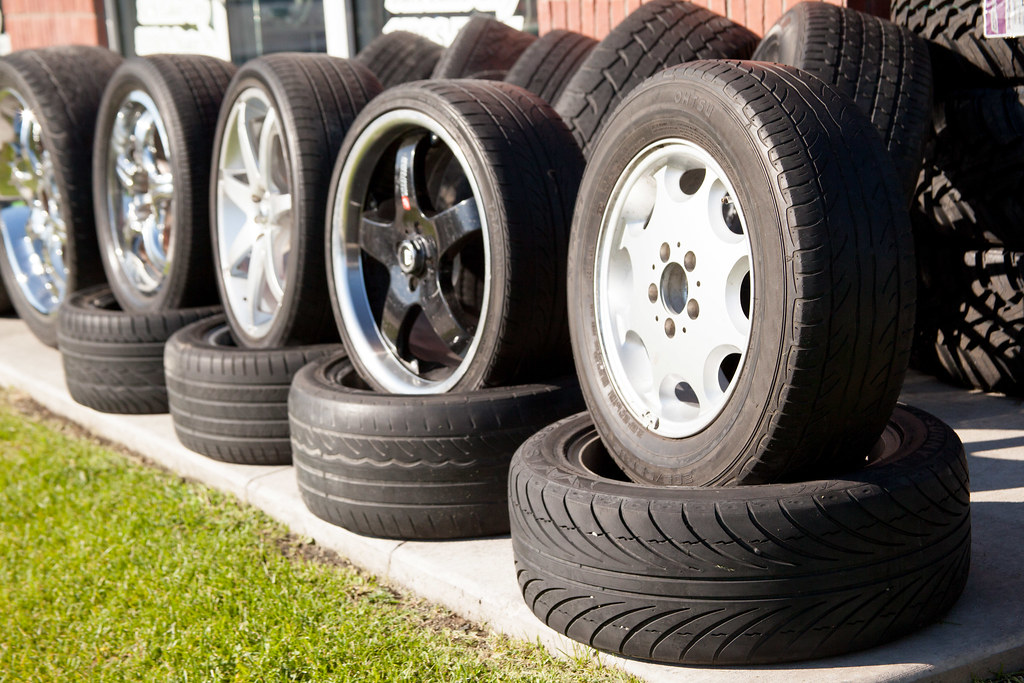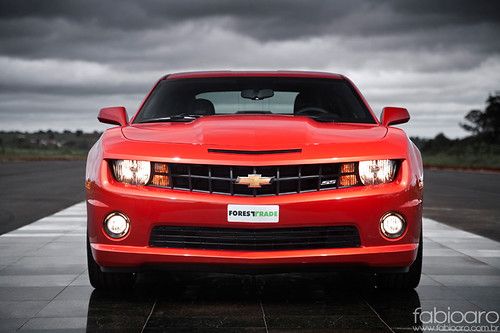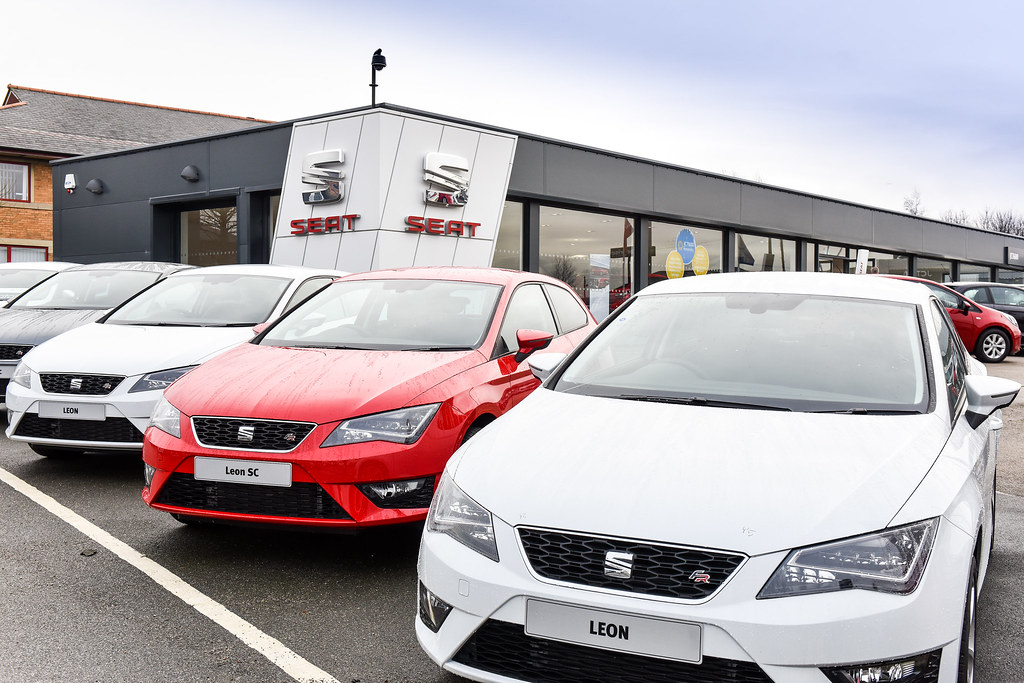
As individuals, we all think we are the most skilled drivers on the road, and everyone else is either a lunatic or an idiot. We inherently judge the driving habits of others, often forming quick, sometimes unfair, opinions about the vehicles they command. It’s a fundamental part of the automotive experience, a shared, often unspoken, understanding that certain cars seem to attract a particular caliber of driver – for better or, more frequently, for worse.
But how often are those opinions true? According to recent studies, specifically comprehensive analyses by LendingTree, drivers of certain car brands have indeed earned their poor reputations, and the data paints a compelling picture. These aren’t just subjective observations or passing stereotypes; they are conclusions drawn from tens of millions of insurance quote inquiries, meticulously tracking incidents like accidents, DUIs, speeding, and various citations.
In this in-depth exploration, we delve beyond the typical water-cooler discussions and into the statistical realities that define driver behavior across various automotive brands. We’ll be examining the top contenders that, based on robust data, are linked to drivers with a higher propensity for incidents. Our focus today is on the first five brands from LendingTree’s ‘Top 10 Car Brands With The Worst Drivers’ study, providing a comprehensive, expert-driven look at what the numbers reveal about who’s behind the wheel.

1. **Ram: The King of Incidents on the Highway**The Ram truck, a ubiquitous sight on American roads, unfortunately claims the top spot in the LendingTree study’s ranking for driver incidents. With a startling 32.90 incidents per 1,000 drivers recorded between November 14th, 2022, and November 14th, 2023, Ram drivers consistently lead the pack in reported issues ranging from accidents and DUIs to speeding violations and various citations. This isn’t merely a minor statistical anomaly; it represents a significant pattern of behavior that casts a long shadow over the brand’s on-road image.
Ram trucks are unequivocally known for housing powerful engines, delivering impressive levels of horsepower and torque that appeal to a demographic seeking capability and presence. Consider the 2024 Ram 1500 TRX, for instance, equipped with a Supercharged 6.2L HEMI® V8 engine capable of rocketing the truck from 0 to 60 mph in a mere 4.5 seconds. This immense power, while exhilarating, seems to contribute to a driving style that often borders on aggressive, perhaps tempting drivers to push limits more frequently than their peers in other vehicles.
Anecdotal observations from experienced drivers often align with this data, painting a picture of Ram owners who, at times, exhibit a ‘dickish behavior’ behind the wheel. Comments from our readership frequently highlight “Ram trucks… weaving in and out of traffic, tailgating, and otherwise creating mischief” on the road. This perception of aggressive driving, where the sheer size and height of the vehicle seem to embolden some drivers, is a recurring theme, particularly with complaints about tailgating and the blinding effect of modern, high-mounted headlights in rearview mirrors.
The consistency of Ram’s performance in these studies is also noteworthy. The 2024 LendingTree study further solidified its position, reporting 33.92 incidents per 1,000 drivers, placing it second overall in that year, but with the unfortunate distinction of having the worst drivers across 16 states. New Jersey, in particular, recorded the highest number of incidents for Ram drivers. This persistent trend suggests that the brand’s association with a higher rate of driving incidents is not a fleeting phenomenon but a deeply ingrained characteristic observed across diverse geographic regions.
Ultimately, while Ram trucks offer formidable performance and utility, the data strongly suggests that the drivers attracted to these powerful machines often contribute disproportionately to on-road incidents. It poses a unique challenge for the brand, where the vehicle’s inherent capabilities, when combined with certain driving tendencies, translate into a statistically higher likelihood of undesirable road behavior, affecting overall public perception and road safety.
Car Model Information: 2019 RAM 1500 Longhorn
Name: Ram Trucks
Logo: Ramchryslerlogo.png
FormerName: Dodge Ram
Type: division (business)
LocationCity: Auburn Hills, Michigan
Foundation: [object Object]
AreaServed: North America, Middle East, Latin America, Europe, Southeast Asia, Oceania, and Angola
Industry: Automobile
Predecessor: Graham Brothers,Fargo Trucks,Plymouth (automobile)#Plymouth trucks
KeyPeople: Tim Kuniskis (CEO)
Products: Truck
Parent: Chrysler
Homepage: https://www.ramtrucks.com/|ramtrucks.com
Categories: 2010 establishments in Michigan, All Wikipedia articles written in American English, All articles with unsourced statements, Articles with short description, Articles with unsourced statements from July 2024
Summary: Ram Trucks (stylized as RAM) is an American brand of light to mid-weight pickup heavy duty trucks and other commercial vehicles, and a division of Stellantis North America (previously Chrysler Group LLC). It was established in a spin-off of Dodge in 2009 using the name of the Ram pickup line of trucks. Ram Trucks’ logo was originally used as Dodge’s logo. New series Ram 1500 pickups are made at Sterling Heights Assembly in Sterling Heights, Michigan. Since its inception, the brand has used the slogan “Guts. Glory. Ram.”
Get more information about: Ram Trucks
Buying a high-performing used car >>>
Brand: Ram Model: truck
Price: $26,750 Mileage: 140,360 mi.
Read more about: Today’s Al Roker Navigates Life’s Milestones: From Heartfelt Family Joys and New Beginnings to Personal Health Battles and Loss
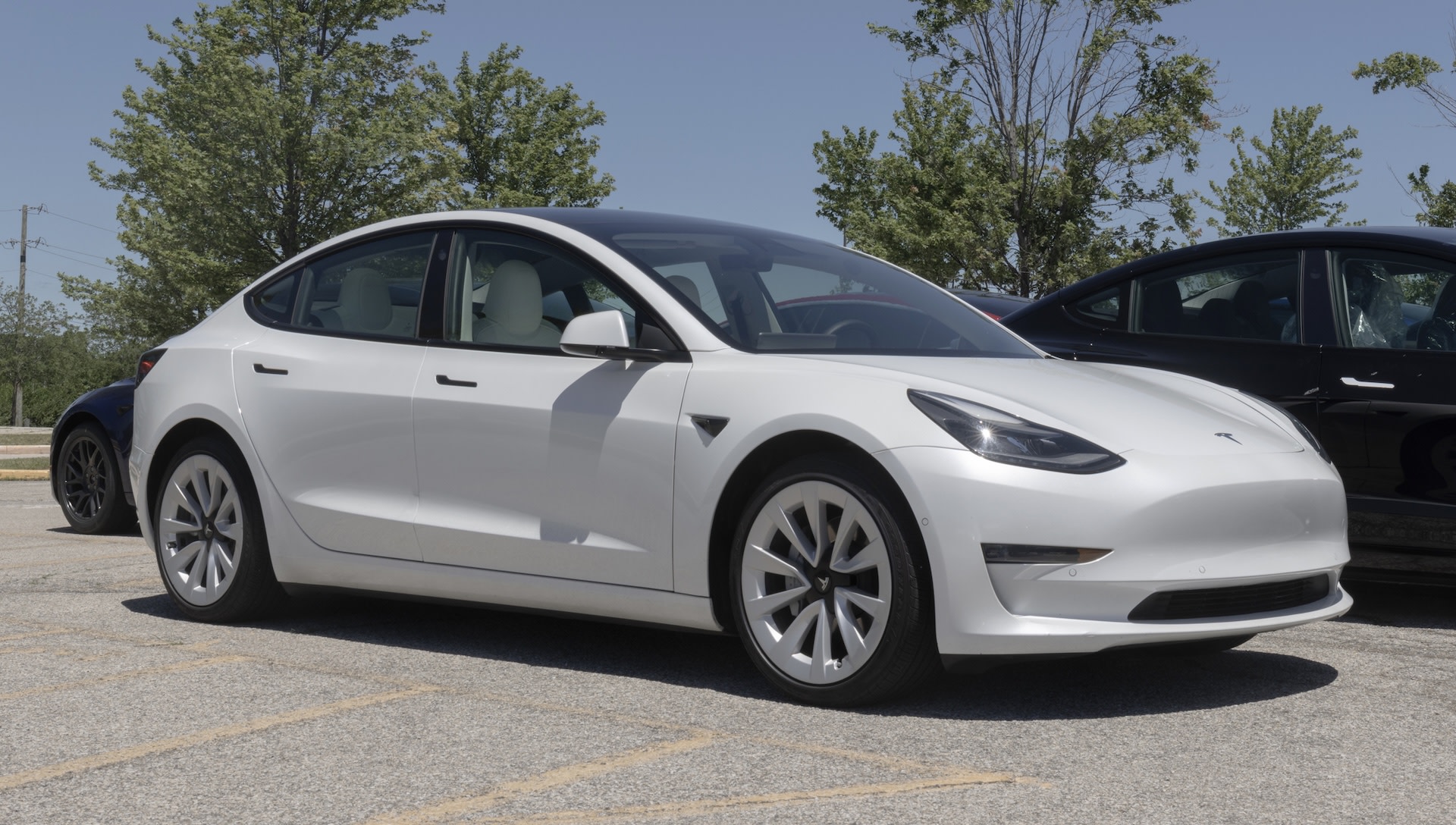
2. **Tesla: The Electric Enigma of Erratic Driving**Securing the second spot in the 2022-2023 LendingTree study, Tesla drivers recorded 31.13 incidents per 1,000 drivers, placing the electric vehicle pioneer firmly within the top tier of brands linked to problematic road behavior. This ranking is particularly intriguing given Tesla’s reputation for cutting-edge technology and, crucially, its “instant acceleration and performance,” characteristics that, much like Ram’s power, seem to influence driver conduct in unexpected ways.
The driving style often observed in Teslas is frequently described as “not smooth; it’s very twitchy and nervous.” This perception is partly attributed to the regenerative braking system inherent in EVs, which can cause cars to “slow down too fast when the conditions don’t dictate doing that,” creating unpredictable movements for following traffic. There’s a curious paradox where the very swiftness of these vehicles leads some drivers to appear “scared to drive up to speed in a quicker motion,” resulting in what some perceive as “super slow drivers” despite the car’s formidable capabilities.
Beyond the kinetics of acceleration and deceleration, navigational shortcomings are also frequently cited as a contributing factor to Tesla drivers’ reputations. Observations suggest that “most Teslas… seem to not know where they’re going…ever.” This often manifests as drivers “slow[ing] down on a main road to a crawl, no signal or warnings, and slowly cut across lanes to get to the right one…just to realize that also wasn’t the lane they needed to be in.” In an era of advanced in-car navigation, this navigational indecision creates a palpable sense of unpredictability and frustration for other motorists.
The 2024 LendingTree study further underscores this trend, where Tesla actually ascended to the top spot with 36.94 incidents per 1,000 drivers. It was identified as having the worst drivers in nine states, reinforcing the earlier findings. The collective data and anecdotal experiences point to a pattern where the unique performance characteristics of Teslas, combined with specific driver habits, culminate in a statistically higher incidence of driving infractions and a general perception of “clueless” behavior on the road.
While the brand revolutionized the automotive industry with its electric prowess and technological innovation, the evidence suggests that owning a Tesla doesn’t automatically translate to superior driving discipline. Instead, the combination of powerful, instantly responsive vehicles and perhaps a certain type of owner contributes to an unenviable ranking in the sphere of driver reputation.

3. **Subaru: The Surprising Speed Demon of the Top Three**Earning the third position in the 2022-2023 LendingTree study, Subaru drivers accounted for 30.09 driving incidents per 1,000 drivers. This places Subaru alongside Ram and Tesla as one of only three car brands whose drivers had incident rates exceeding the 30.00 mark, signaling a significant pattern that goes beyond mere coincidence. For many, Subaru’s inclusion near the top of this list comes as a surprise, given its general reputation for safety and reliability.
However, a closer look reveals a potent aspect of the Subaru brand that resonates with a specific segment of drivers: performance. The context highlights that “Some Subaru models can be real speed demons.” This is particularly true for vehicles like the WRX, which are often chosen by “racing enthusiasts” who then “give it all the racing mods,” naturally leading to a more aggressive and high-speed driving style. This tendency to push performance envelopes undoubtedly contributes to a higher incidence of speeding violations and, consequently, a less-than-stellar driver reputation.
The 2024 LendingTree study reaffirms Subaru’s position in this unwelcome hierarchy, showing 32.85 incidents per 1,000 drivers, again placing it third. The brand’s presence in this top tier isn’t just a nationwide average; specific state data from the study further illustrates localized patterns of aggressive driving. For instance, California recorded a strikingly high 57.66 incidents per 1,000 drivers for Subaru, while Minnesota reported 33.28, Missouri 34.49, and Montana 36.89. These figures suggest a concentrated pattern of incidents in various regions, often associated with driving that pushes boundaries.
It appears that while Subaru offers a diverse range of vehicles, the strong appeal of its performance-oriented models like the WRX, combined with a dedicated enthusiast base, significantly influences its overall driver incident rates. The desire for speed and enhanced driving experiences, when not tempered with commensurate caution and adherence to road regulations, regrettably translates into a statistical pattern of more frequent driving infractions.
This nuanced perspective allows for a balanced critique: the vehicles themselves are capable, but the passion for performance they inspire in a segment of their owners ultimately impacts the brand’s collective driver reputation, making it a surprising yet data-backed member of the top three.
Read more about: Steer Clear! Unpacking 13 Overrated Car Brands That Are All Hype, No Substance – Reliability Gaps & High Upkeep Drive Frustration
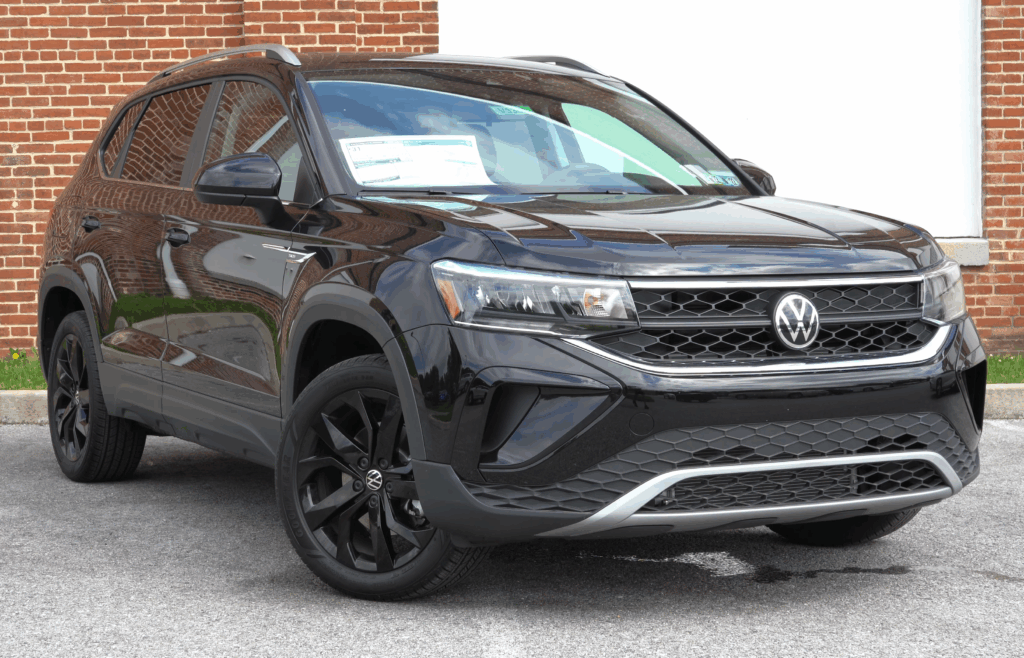
4. **Volkswagen: Subtle Contributor to the Incident Landscape**Volkswagen drivers found themselves in the fourth position in the 2022-2023 LendingTree study, with a recorded 27.92 incidents per 1,000 drivers. While not as high as the top three, this still places the German automaker’s drivers firmly within the upper echelons of those linked to poor driving reputations. The brand, known for its engineering and accessible European flair, presents a less obvious case than its more overtly performance-driven counterparts, yet its position is statistically significant.
The 2024 LendingTree study indicates a slight increase in Volkswagen’s incident rate, climbing to 31.56 incidents per 1,000 drivers, placing it sixth in that particular report. This consistent presence near the top of such rankings suggests a persistent underlying trend rather than a fleeting observation. What’s particularly notable is the regional variation in these figures, as the study highlights that “The numbers are much higher in some states, like Alaska and Idaho.”
Specific state data from the comprehensive study provides further detail, with Alaska showing 29.09 incidents per 1,000 Volkswagen drivers, and Idaho recording a substantial 38.51. While the context doesn’t offer specific anecdotal insights into Volkswagen driver behaviors, the nature of the incidents tracked — accidents, DUIs, speeding, and citations — implies a general lack of adherence to traffic laws or a higher propensity for errors leading to collisions in these regions.
Volkswagen’s diverse lineup, ranging from compact cars to SUVs, does not immediately suggest a common thread of aggressive driving like that seen with Ram or high-performance Subaru models. However, the data robustly indicates that a significant portion of its driver base contributes to a higher overall incident rate. This might stem from a combination of factors, including average driver skills, or perhaps a segment of owners who, despite the brand’s sensible image, engage in risky behaviors such that they accumulate a higher number of infractions.
Without specific anecdotal commentary, the statistical evidence remains the core of the analysis. Volkswagen’s consistent placement in these studies signals that, regardless of the ‘why,’ its drivers collectively exhibit patterns that lead to a statistically poorer driving reputation compared to many other brands on the road.

5. **Mazda: Unexpectedly High Accident Rates**Rounding out the top five in the 2022-2023 LendingTree study, Mazda drivers registered 27.74 incidents per 1,000 drivers, placing them just behind Volkswagen. Mazda, a brand often lauded for its “Zoom-Zoom” philosophy and engaging driving dynamics, finds itself in an unexpected position when it comes to overall driver reputation, particularly concerning one critical metric: accidents.
The 2024 LendingTree study further emphasizes Mazda’s challenge, with an incident rate of 31.86 per 1,000 drivers, and a noteworthy finding that Mazda drivers “also come with the fourth-highest accident rate of all brands.” This specific detail provides a critical insight into the nature of incidents associated with Mazda vehicles. It suggests that while other brands might be penalized more for speeding or DUIs, Mazda drivers are disproportionately involved in collisions.
The comprehensive data also points to significant regional variations, with the District of Columbia recording a high of 52.08 incidents per 1,000 Mazda drivers. This localized spike hints at specific conditions or driver demographics that might be contributing to the elevated accident rates. The brand’s focus on driver engagement and spirited handling, while appealing to enthusiasts, might, in some hands, lead to overestimation of skills or taking risks that culminate in collisions.
It’s a peculiar juxtaposition for a brand that prides itself on creating cars that are a joy to drive. The implication is not that Mazda cars are inherently unsafe, but rather that the driving experience they offer might encourage a more dynamic, and at times less cautious, approach to driving among a segment of their owners. This could manifest as drivers pushing the limits of the vehicle’s handling capabilities or simply a statistical grouping of drivers who are more prone to situations leading to accidents.
Ultimately, while Mazda’s vehicles offer a compelling blend of performance and practicality, the data strongly suggests that its drivers, collectively, face a significant challenge regarding their on-road safety record, particularly concerning accident involvement, making it a critical area for observation within the broader discussion of driver reputation.
As we shift our focus from the initial group of brands, it becomes clear that the narrative surrounding driver reputation is multifaceted, extending beyond just the top-tier incident rates. The next five brands in LendingTree’s rigorous analyses—BMW, Lexus, Infiniti, Hyundai, and Toyota—each bring their own unique set of circumstances and driver perceptions to the forefront. These aren’t merely vehicles; they represent a spectrum of driving philosophies and owner demographics, all contributing to the intricate tapestry of on-road behavior that we’re meticulously unraveling. Our continued exploration highlights how brand identity, performance capabilities, and perhaps even the sheer volume of a particular model on the road, play a crucial role in shaping their drivers’ collective standing.

6. **BMW: The Blinker-Averse, Arrogant Performer**BMW, a brand synonymous with performance and the “Ultimate Driving Machine,” consistently appears within the top half of car brands linked to problematic driving behavior. In both the 2022-2023 and 2024 LendingTree studies, BMW drivers recorded 26.82 incidents per 1,000 drivers. This stable, yet significant, figure confirms that BMW drivers continue to contribute disproportionately to the overall incident landscape, solidifying a long-held public perception.
One of the most enduring criticisms, as highlighted by our readership, centers on the notorious “blinker-aversion.” As one reader emphatically stated, “BMW BMW BMW BMW BMW BMW BMW BMW BMW BMW. Use the damn blinkers!” This anecdotal observation points to a widespread perception of arrogance or a disregard for basic traffic courtesy, leading to unpredictable and frustrating interactions for other drivers. The perceived arrogance, whether stemming from the vehicle’s performance or its luxury status, often manifests in aggressive lane changes or a general sense of entitlement.
While the 2024 study did note a positive shift in BMW’s DUI rates, improving from 3.13 in 2023 to 2.57, this offers a partial counterbalance to the overall consistent incident rate. However, localized data remains concerning. States like Alabama reported 44.40 incidents per 1,000 drivers, Colorado 37.16, and Iowa 46.75, indicating specific regional hotspots where BMW drivers are statistically much more prone to infractions, far exceeding the national average.
Ultimately, the BMW driver reputation is a complex blend of high-performance enthusiasm and perceived social disregard. While the vehicles are engineered for dynamic driving, it appears that a segment of their owners embraces this dynamism perhaps a little too enthusiastically, often at the expense of harmonious road sharing. The data, coupled with widespread anecdotal evidence, firmly places BMW in the conversation about brands associated with a challenging driver image.
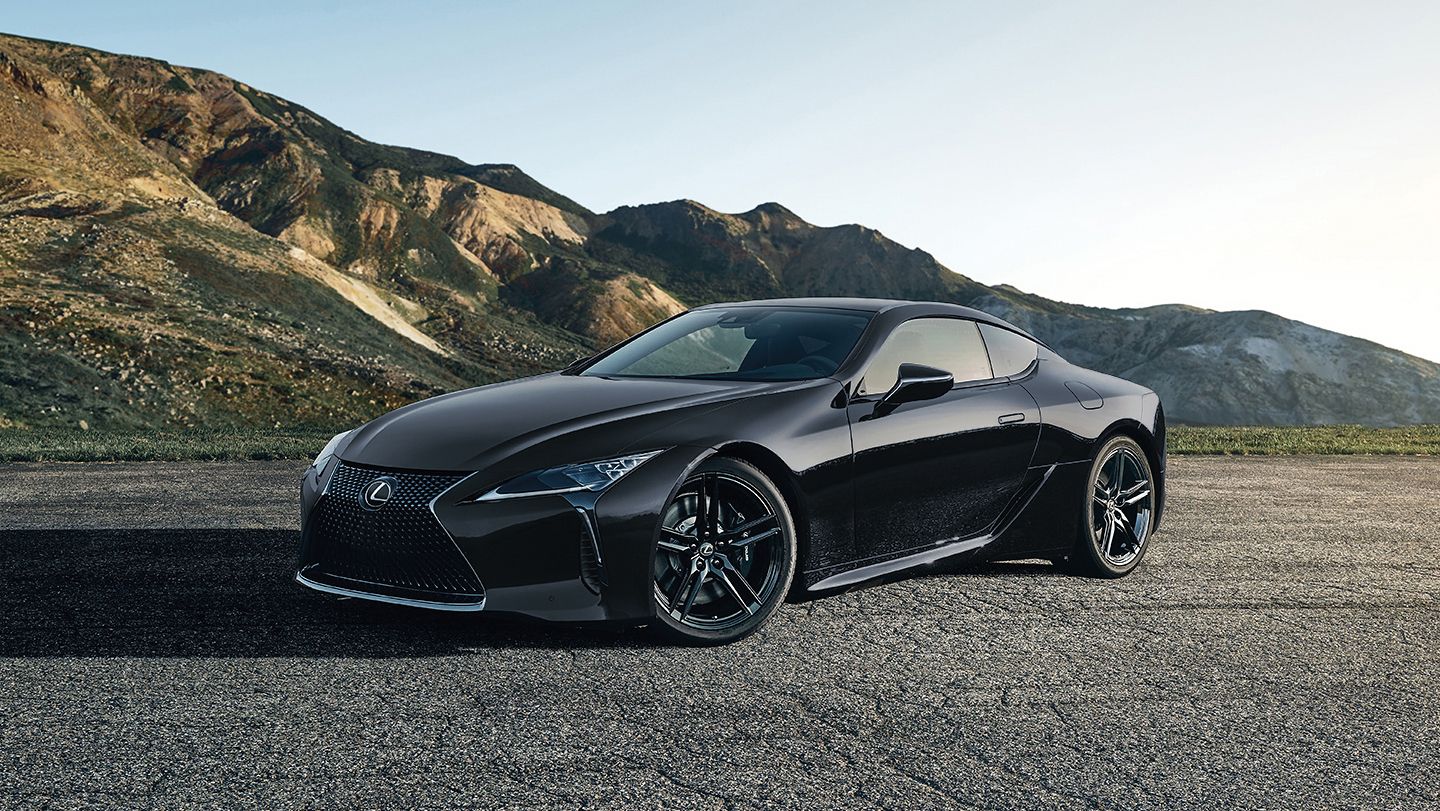
7. **Lexus: The Oblivious Cruiser of the Left Lane**Lexus, Toyota’s luxury division, is a brand revered for refinement and reliability, yet its drivers contribute significantly to the pattern of poor on-road behavior. In the 2022-2023 LendingTree study, Lexus drivers registered 26.73 incidents per 1,000 drivers. This ranking suggests that even drivers of highly regarded luxury vehicles are not immune to accumulating incidents that contribute to a less-than-stellar collective reputation among motorists.
A prominent theme in observations about Lexus drivers, particularly those in “slightly aged Camry and Lexus ES models,” is a perception of “incompetence and slow speed.” These cars are seen as the “quintessential car[s] for people who don’t want to drive but need a car,” as one reader critically noted. This implies a segment of Lexus owners who view their vehicle purely as an appliance, leading to a general lack of awareness, a tendency to drive below the speed limit, or an obliviousness to surrounding traffic conditions, which can significantly frustrate faster-moving traffic.
The critique extends to specific models, with a reader boldly declaring, “Lexus ES drivers suck and this is my thesis statement.” This strong, albeit anecdotal, sentiment suggests that the serene, isolated cabin experience of a Lexus might inadvertently contribute to drivers becoming less engaged with the dynamic environment of the road. When drivers are disengaged, the likelihood of minor infractions, or even more serious incidents due to delayed reactions, can naturally increase.
Furthermore, state-specific data provides geographical context to these observations. North Dakota, for example, recorded an astonishing 48.58 incidents per 1,000 Lexus drivers, a figure significantly higher than the national average. Such regional disparities highlight that while the brand’s overall ranking is substantial, certain areas exhibit particularly concentrated patterns of problematic driving. The statistical evidence, combined with public perception, firmly places Lexus drivers among those whose on-road behavior frequently draws criticism.

8. **Infiniti: The High-Speed Weavers with Overconfidence**Infiniti, the luxury arm of Nissan, carves out its own distinct—and often aggressive—niche within the landscape of driver reputations. In the 2022-2023 LendingTree study, Infiniti drivers recorded 26.72 incidents per 1,000 drivers. However, the 2024 study saw their incident rate climb to 29.37 per 1,000, specifically identifying Infiniti drivers in Hawaii, Rhode Island, and Vermont as the “biggest offenders.” This upward trend and concentrated regional issues point to a particular style of driving that garners significant negative attention.
The most prominent characteristic attributed to Infiniti drivers, as vividly described by one reader, is an inclination for “badass weaving through traffic at 100+ mph,” often leading to accidents where the vehicle is “spun off the road.” This portrayal suggests a dangerous mix of high-speed maneuvers, overconfidence, and a distinct lack of consideration for other road users. It’s the kind of driving that borders on reckless, where the perceived agility and power of the vehicle embolden drivers to engage in risky, high-stakes navigation that frequently ends poorly.
The comparison to its parent company, Nissan, further illuminates this reputation. The sentiment, “You can take the driver out the Nissan, but not the Nissan out the driver,” suggests a shared driving culture or demographic, implying that some of the aggressive tendencies associated with certain Nissan models are amplified in their luxury counterparts. This could stem from the more potent engines and performance capabilities often found in Infiniti vehicles, which, in the wrong hands, encourage pushing limits even further.
The state-specific data strongly supports these anecdotal observations, with Hawaii recording a staggering 52.83 incidents per 1,000 Infiniti drivers, Rhode Island an even higher 64.69, and Vermont 44.78. These are not minor statistical fluctuations; they are significant spikes indicating concentrated patterns of aggressive, incident-prone driving in these regions. Infiniti drivers are often perceived, and statistically proven, to be among the most aggressive and unpredictable on the road.
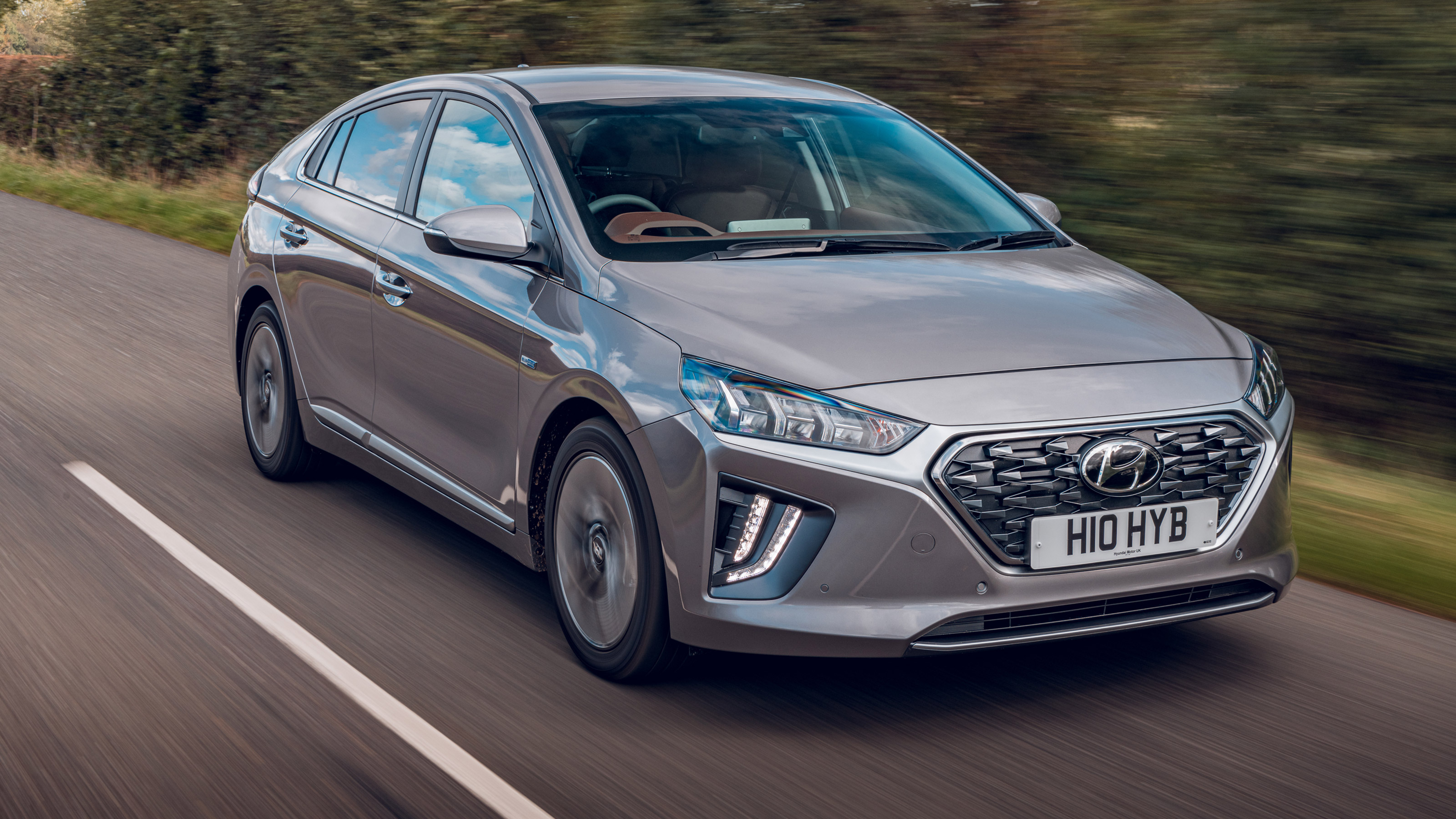
9. **Hyundai: The Elantra Effect and Competitive Driving**Hyundai, a brand that has significantly advanced in quality and design, nonetheless finds its drivers listed among those with poor reputations. In the 2022-2023 LendingTree study, Hyundai drivers were associated with 25.47 incidents per 1,000 drivers. While this rate is lower than some top offenders, it still represents a statistically significant pattern, especially considering the brand’s diverse model lineup.
The most potent specific commentary regarding Hyundai drivers centers almost entirely around the Elantra, particularly the perception surrounding the “N model.” As one reader keenly observed, “everyone who drives an Elantra thinks its an N model anyway.” This highlights a curious phenomenon where even drivers of standard Elantras seem to adopt a competitive, performance-oriented driving style, despite their vehicle’s actual capabilities, frustrating other motorists.
These behaviors include aggressive tailgating, only for the driver to then “slow down to less than you were going in the first place once they’re ahead of you.” This erratic, inconsistent driving style suggests an attempt to dominate the road or assert superiority, often without the skill or situational awareness to execute it safely or efficiently. Other common complaints involve “clogged left lane” habits and treating any attempt to pass an Elantra as an “insult,” initiating a “manhood race” where competitive instincts override rational driving.
Further reinforcing this stereotype are observations of Elantra drivers with “dark windows and go-fast stickers,” signaling an overt attempt to project a performance image. Their propensity for “constant lane changes in stopped traffic” is another indicator of impatience and a belief that rules of the road apply less stringently to them. This level of public recognition for a specific vehicle’s driver behavior is a powerful testament to the consistency of the pattern.
Ultimately, while Hyundai offers a broad range of vehicles, the Elantra, in particular, has become a lightning rod for criticism regarding competitive and often erratic driving. The data, coupled with widespread anecdotal experiences, suggests that a significant segment of Hyundai drivers, particularly those behind the wheel of an Elantra, contribute to a reputation for aggressive and unpredictable road behavior, impacting the brand’s overall standing despite its advancements.
Car Model Information: 2011 Hyundai Elantra Touring GLS
Name: Hyundai Elantra/Avante
Manufacturer: Hyundai Motor Company
Aka: Hyundai Avante,Hyundai Lantra (1990–2000),Hyundai i30 Sedan (2020–present)
Production: 1990–present
Class: Compact car
Layout: Front-engine, front-wheel-drive layout
Predecessor: Hyundai Stellar
Categories: 2000s cars, 2010s cars, 2020s cars, All articles with bare URLs for citations, All articles with dead external links
Summary: The Hyundai Elantra (Korean: 현대 엘란트라), also known as the Hyundai Avante (Korean: 현대 아반떼), is a compact car produced by the South Korean manufacturer Hyundai since 1990. The Elantra was initially marketed as the Lantra in Australia and some European markets. In Australia, this was due to the similarly named Mitsubishi Magna Elante model; in Europe because of the Lotus Elan. The home market name Avante used from the second generation is not used in most export markets due to its similarity with Audi’s “Avant” designation, used for their station wagon models. The name was standardized as “Elantra” worldwide in 2001 (except in South Korea, Singapore and Russia).
Get more information about: Hyundai Elantra
Buying a high-performing used car >>>
Brand: Hyundai Model: Elantra
Price: $6,990 Mileage: 101,383 mi.
Read more about: Steer Clear: The 15 Overrated Car Brands Riddled with Maintenance Nightmares and Low Reliability

10. **Toyota: The Unaware Appliance Driver with High Incidents**Toyota, a titan of the automotive industry renowned globally for its unparalleled reliability and sensible engineering, surprisingly rounds out the top ten in the LendingTree study. With 25.13 incidents per 1,000 drivers in the 2022-2023 report, and an increased 29.09 incidents per 1,000 drivers in the 2024 study, Toyota drivers exhibit a statistically significant propensity for incidents. This seemingly contradictory finding necessitates a deeper look into the unique factors at play.
The high volume of Toyotas on the road is often cited as a key contributing factor. As one reader eloquently put it, “There are about a billion of them on the road because they’re good, reliable cars that are cheap to run.” This widespread appeal means Toyotas are frequently chosen by “someone who hates driving, or isn’t good at driving, or is just starting driving, or just wants an appliance for driving.” Such a demographic, prioritizing utility over driving skill or enthusiasm, naturally leads to a higher aggregate of incidents.
Anecdotal evidence from seasoned drivers paints a vivid picture of this “appliance driver” phenomenon. Corolla drivers, in particular, are singled out for their perceived “incompetence” and propensity for “the dumbest, craziest thing you could possibly imagine.” The list of infractions is exhaustive: “Blind lane changes without signalling,” “Turning left with oncoming traffic,” “Turning left from the right lane,” “Running red lights,” and “Stopping for roundabouts to let cars in.” These behaviors suggest a profound lack of spatial awareness, misunderstanding of traffic rules, or sheer obliviousness rather than malicious intent.
The Camry, another Toyota stalwart, also draws specific criticism. Camry drivers are often accused of “going too slow and not being aware of faster moving traffic around them,” frequently “camp[ing] in the left lane without a care.” This behavior highlights a common frustration: drivers who prioritize their own comfort or perceived safety over the flow of traffic, causing bottlenecks and irritation. The notion that “If you don’t care about the color of your car, why would you care about the way it’s driven?” (referring to “beige Camry” drivers) further underscores this idea of a driver who sees their car merely as transportation, detached from the act of driving itself.
The statistical data further supports these observations, with Toyota drivers having the “eighth-highest accident rate and fourteenth-highest DUI rate” in the 2024 study. These metrics are critical, indicating that beyond frustrating minor infractions, Toyota drivers are statistically more likely to be involved in serious incidents. While the brand excels in producing reliable vehicles, this reliability paradoxically attracts a broad base of drivers whose collective habits, whether through inexperience, inattention, or apathy, contribute significantly to a less-than-ideal on-road reputation.
**The Road Ahead: Decoding Driver Behavior and Brand Perceptions**
Our journey through the landscape of driver reputations, meticulously supported by LendingTree’s extensive data, reveals that the stereotypes and anecdotal frustrations we often harbor about specific car brands are frequently rooted in statistical reality. From the aggressive posturing of Ram drivers to the blinker-averse tendencies of BMW owners, and from the competitive nature of Hyundai Elantra drivers to the often-oblivious movements of Toyota commuters, each brand’s standing on this list tells a story about the interplay between vehicle characteristics and driver behavior. It’s a complex ecosystem where engine power, technological sophistication, luxury appeal, and even a car’s sheer affordability can subtly, or sometimes overtly, influence how its operators navigate our roads.
This in-depth analysis underscores that while individual driving skill varies immensely, certain brands consistently attract—or perhaps cultivate—driver habits that lead to a higher incidence of accidents, DUIs, speeding violations, and other citations. It’s not necessarily a condemnation of the vehicles themselves, many of which are engineering marvels, but rather an illuminating reflection on the human element behind the wheel. The data serves as a powerful reminder that our perceptions, however strong, can be reinforced by concrete evidence, urging us to be ever-vigilant and perhaps a little more understanding of the diverse driving styles that populate our highways. Ultimately, knowing which cars are statistically linked to challenging drivers isn’t just about judgment; it’s about fostering greater awareness, promoting safer driving habits, and perhaps, inspiring a collective push for better road etiquette across all brands.

